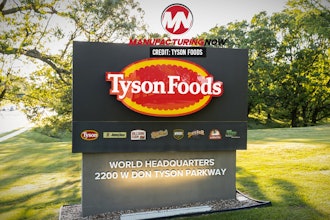
According to a Mckinsey report, one-third of all food is lost during production each year globally, due to non-optimal conditions. As agricultural technology endeavors to improve crop yield and quality, with the help of big data and artificial intelligence (AI), Mark Howard, United States country manager at industrial parts supplier EU Automation, explains how data-driven farming is changing the agricultural sector.
The report, published by Mckinsey, explains that cutting post-harvest losses in half could produce enough food to feed a billion more people around the world. Widespread adoption of precision farming technology could make this a reality.
The farming industry has become incredibly high-tech in recent years, with the emergence of precision agriculture. This is a farming management concept that analyses the conditions of fields at very high resolution, meaning watering, fertilizing, and harvesting of crops are considered on a plant-by-plant basis. This maximizes crop yield and in turn, improves profits.
To increase adoption of this technology, precision agriculture businesses are rapidly producing new devices to enhance the capabilities of the traditional tractor. For example, soil scanners. Towed by a tractor, these devices show the variability of soil moisture and nutrition across hectares of land. Using this information, farmers can adjust the amount of water given to crops, based on which areas are shown to need extra hydration or nutrition.
In another example, drone imagery can be used to generate high-resolution images of farmer’s fields, showing the yield concentration across the area. Think of this like a heat map, with different colored zones representing different levels of yield. With this information, the farmer can apply pesticides, water and fertilization to areas that need it, while saving these resources on areas that don’t.
Precision agriculture is big business. The global market value is projected to reach $10 billion by 2023, expanding at a CAGR of 13.1 percent during 2018 to 2023. The market is booming, and is driven by the huge need to improve farming yield to support the growing population.
However, farm tractors haven’t changed much since internal combustion engines started replacing steam power 100 years ago. While new technology is providing information to farmers and enabling them to make data-driven decisions, legacy machinery at tractor manufacturing level still has an important role.
Manufacturing the hardware of a tractor is no easy feat. Tractor components are heavier, thicker and stiffer than automotive parts, and must endure higher loads and harsher working environments. Unsurprising then, that the machinery used to create these parts are high-quality, trusted and very expensive. Today’s agriculture vehicles are faster, more powerful and cleaner than ever before. The parts supplied to the assembly lines dedicated to manufacturing these machines, such as the steering system joints and shafts, have been delivered as a constant stream for many decades, to keep up with market growth.
Relentless part manufacturing has left little time for complete factory makeovers or overhauls of assembly lines. While some new machines will have been brought in over the years, much of the machinery used to create the trucks of the 80’s, may still be working well today.
Using legacy equipment certainly isn’t hindering the evolution of agricultural machinery. By not replacing these trusted production lines just for the sake of it, agricultural vehicle manufacturers are able to keep production costs to a minimum and keep purchase costs competitive.
Realistically though, some of these legacy parts may need replacing. Some manufacturers may see the breakdown of one piece of equipment as an opportunity to update other parts of the production line. Others may also assume old, obsolete parts have long left the market.
Positively, industrial parts suppliers such as EU Automation, are likely to be able to find the replacement parts agricultural machinery manufacturers need, with fast lead-times. Equally, if plant managers decide to purchase multiple pieces of equipment, whether that be different motors, human machine interfaces (HMIs) and CNC machines, the part supplier’s worldwide network of automation can help manufacturers find exactly what is required.
As precision farming aims to reduce crop loss to feed the growing population, the fundamental form of a tractor, which has long proven its place in agriculture, will be the enabler of new technology.






















